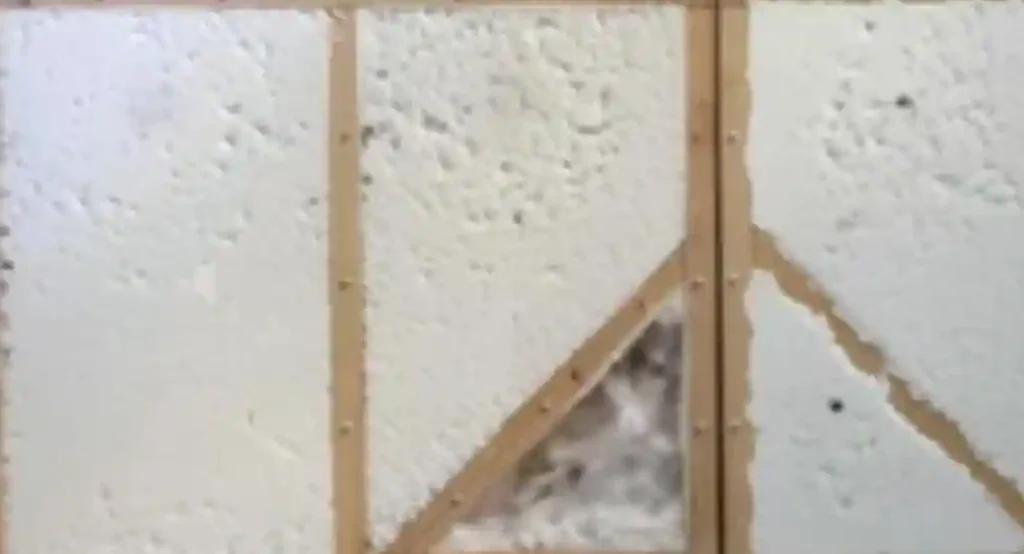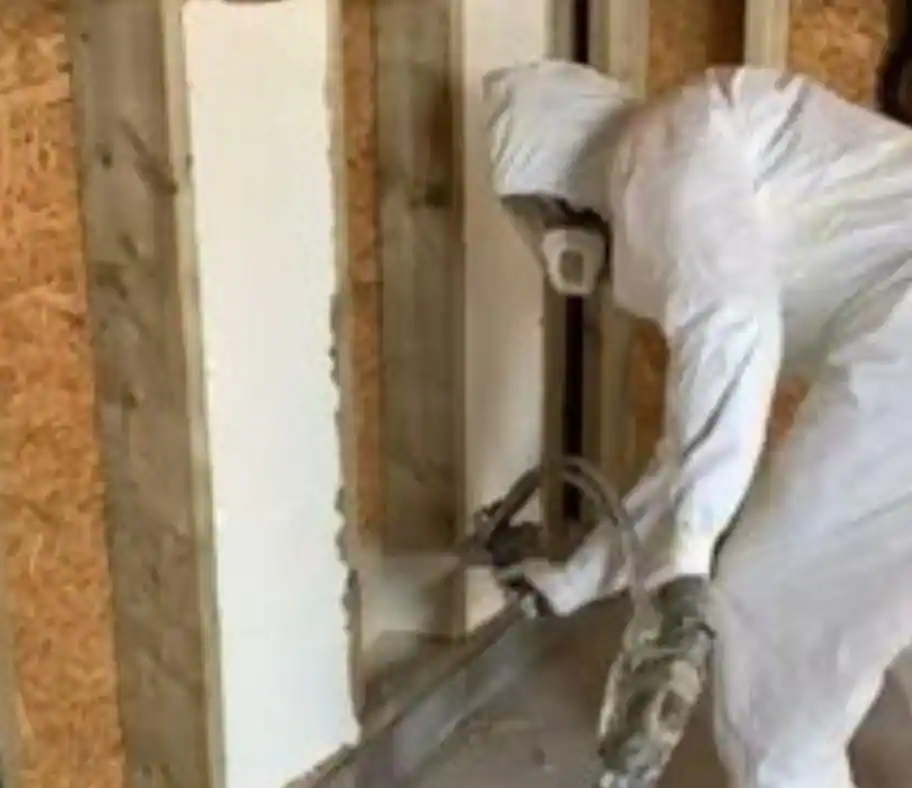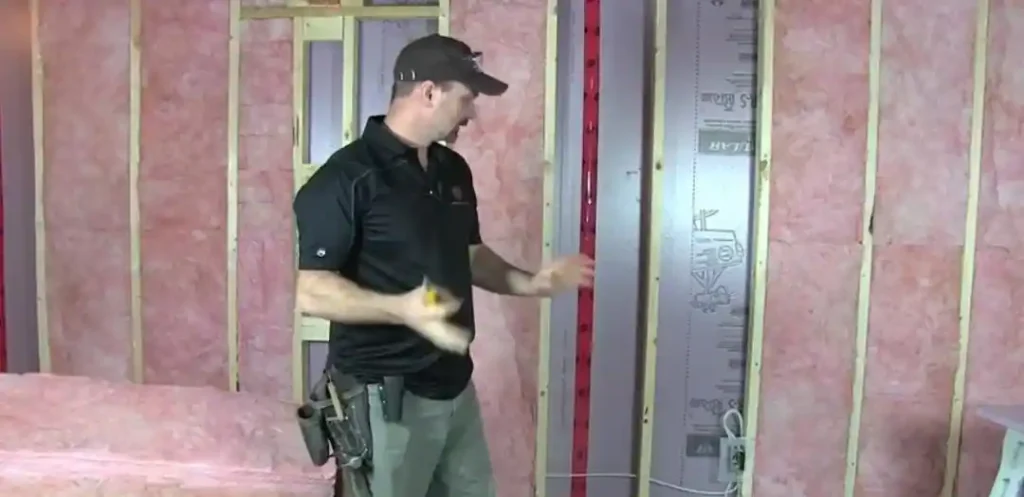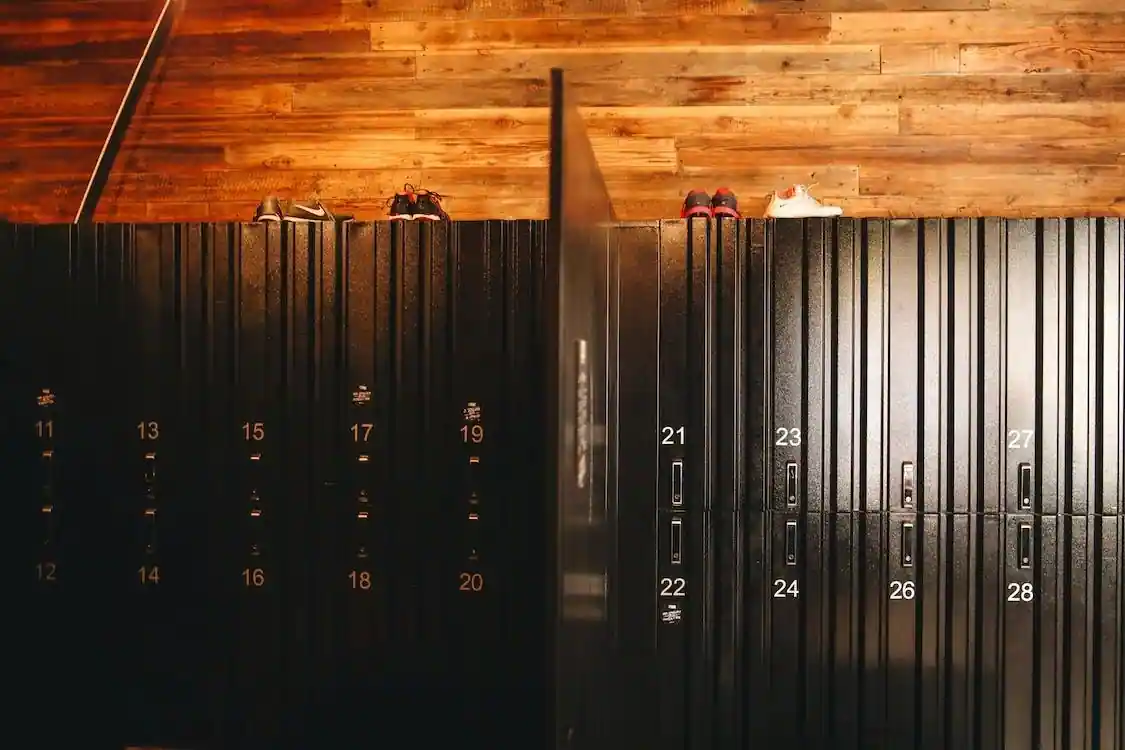Passive House Wall Insulation, this is the “The Complete Guide to Understanding the Secrets of Passive House Wall Insulation
Building construction has experienced a paradigm shift towards new building addresses in light of the growing demand for sustainable living and energy efficiency. The Passive House is known as a building method and type of house that increases values energy efficiency as well as comfort. It is one of these innovative ideas. According to insulation experts, Wall insulation is an essential element at the center of this idea. Here We will share all information on Passive House wall insulation, r value, and u value, in this comprehensive examination, revealing its significance, varieties, and effects on creating an energy- and environmentally-efficient living environment. This home not easy to insulate like Tiny House Insulation, just click and read this post.
Now first we will see how Wall Insulation Functions-
The walls, roofs, and floors that make up the building envelope are essential to reaching the Passive House’s energy efficiency objectives. Walls need special attention because they make up a large portion of the envelope. In a Passive House, minimizing heat movement between the interior and outside environments is the main goal of wall insulation. This method, insulating the walls of a passive house, can help to reduce the need for mechanical heating and cooling systems, which in turn results in a significant reduction in energy consumption, while also guaranteeing a suitable indoor atmosphere.
Wall Insulation Types for Passive Homes
Following are the wall insulation types for passive houses or passive homes
High-Performance Insulation Materials:
State-of-the-art insulation materials with exceptional thermal resistance are frequently used in passive houses. Polyisocyanurate foam, expanded polystyrene (EPS), and extruded polystyrene (XPS) are a few examples. These materials offer superior insulating qualities while keeping a low profile, enabling more effective interior space utilization.
Double Stud Wall Construction:- passive house wall insulation

When designing a Passive House, double stud wall construction is a common technique. It entails building two walls apart to provide more space for thicker insulation. By reducing thermal bridging—the process by which heat moves through a structure—this design improves insulation efficiency all around.
Vacuum Insulation Panels (VIPs):
Offering exceptionally high thermal resistance in a small profile, vacuum insulation panels represent state-of-the-art technology. These panels are made of a core material that is vacuum-sealed to stop heat transfer into the house. VIPs are more costly, but they work well when there is a shortage of space.
Straw Bales and Natural Insulation:
Straw bales and other natural insulation choices, such as sheep’s wool or cellulose fiber, can be used by individuals who choose to use sustainable and natural building materials. These materials not only offer superior insulation but also can able to lessen the building’s total and whole environmental impact.
Obstacles and Things to Think About
Despite the many advantages of Passive House wall insulation, it is important to recognize the difficulties in putting it into practice. It can be difficult as well as time-consuming to achieve a high degree of airtightness during construction. Furthermore, controlling moisture in the building envelope is essential to avoiding problems like mold development.
Passive House Wall R Value
A Complete Guide to Understanding Passive House Wall R-Value
First of all,
Building design that adheres to the Passive House standard is becoming more and more popular as a sustainable and energy-efficient method. The insulation of a house’s walls is one of the most and always an important component that makes it successful and easy to achieve comfort. It keeps the interior atmosphere cozy while using less energy. Here, we will explore the idea of R-value in this blog article, with a particular emphasis on its significance in Passive House walls as well as determining the appropriate R-value for best results.
What does R-Value stand for?
The resistance of a material to heat transfer is measured by its R-value. It shows the degree to which a substance can impede the passage of heat.
The performance of the insulation is better the higher the R-value. When evaluating the energy efficiency of structural elements like floors, walls, and roofs, the R-value is a crucial consideration.
R-Value requirements for walls in passive houses:
Specific guidelines for wall insulation in Passive Houses are established by the Passive House Institute (PHI). Compared to conventional construction rules, it usually calls for a higher level of insulation, albeit the precise R-value may vary depending on temperature zones. The goal is to rely less on active heating and cooling systems as well as more on the building’s passive features.
Accurate R-Value of Walls- passive house wall r value
The right R-value for walls constructed with Passive House principles varies depending on local building codes, building orientation, and climate.
However, an R-value of roughly 40 to 60 is a typical goal for wall insulation in Passive House construction. Compared to the insulation needs of traditional structures, this is a far higher requirement.
High R-Value Materials:
It is frequently necessary to utilize advanced insulation materials in Passive House walls to achieve the recommended R-value. Foam board insulation, cellulose insulation, and high-density fiberglass are typical options. These materials mostly help to enhance the building envelope’s overall airtightness in addition to offering superior heat resistance as well as heat flow. You may read the post, Mineral Wool R Value, in this post we explore detailed information about R-Value.
In conclusion, we can say, that planning and building energy-efficient buildings require a thorough understanding of the R-value concept and its importance in Passive House walls. When walls have the proper R-value with the correct R-valued insulation material, then they can able to successfully contribute to a Passive House’s overall performance, ensuring that residents can enjoy a comfortable indoor atmosphere while using the least amount of energy possible and able to provide higher comfort. The adoption of Passive House design concepts is becoming more and more crucial for a sustainable and more energy-efficient future as the need for sustainable construction practices rises.
Passive House Wall U Value
Thermal transmittance, or U-values, quantifies how well a building material transfers heat. To put it another way, they measure the speed at which heat moves through a building. Low U-values are essential for Passive House design since they signify great thermal resistance.
Resources and Methods for Reaching Low U-Values:
A variety of building materials and methods help to achieve the intended low U-values. Premium insulation materials are frequently utilized, including expanded polystyrene (EPS), aerogel, and vacuum insulation panels. Minimizing heat transfer also greatly depends on airtight building and careful consideration of thermal bridging.
Difficulties in Achieving Low U-Values:
Although designing a passive house requires achieving low U-values, there are difficulties in doing so. It might be challenging to balance costs, material accessibility, and regional building standards. However, these issues are constantly being addressed by developments in sustainable building technologies and environmental friendliness.
Requirements for Passive House Wall U-Value:
A Passive House must adhere to certain requirements, and this means that certain U-values must be met. The Passive House Institute (PHI) recommends that walls have a U-value of no more than 0.15 W/(m²K). This strict standard guarantees that the walls make a substantial contribution to the building’s total energy efficiency.
Passive House Wall Thickness

Here in this passage, we are going to consider about wall thickness of a passive house. You may know that determining and selecting the wall thickness is a crucial component in Passive House design, as it has a direct impact on the energy efficiency of the building. We’ll examine the variables affecting wall thickness selection in this blog article and speculate on what could be ideal for reaching maximum energy efficiency.
So, this information will be helpful to you, for selected the insulation material according to passive house wall u value
Elements Affecting Wall Thickness:
Climate Zone:
The proper wall thickness for a Passive House is greatly influenced by its location. In milder areas, a thinner wall may be sufficient, but thicker walls may be needed in colder climes to improve insulation and minimize heat loss.
Material for Insulation:- passive house cavity wall insulation/ passive house wall thickness
An important factor is the kind and caliber of insulation that is employed. Fiberglass, cellulose, foam boards, and organic materials like hemp or straw are examples of common insulating materials. The necessary thickness is influenced by these materials’ ability to act as insulators.
Orientation of the Building:
The building’s position concerning the sun affects how much heat it gains and loses. Optimizing passive solar heating and cooling can be achieved by carefully planning the arrangement and wall thickness.
Position and Quality of Windows:
Windows can lose heat. The use of premium triple-glazed windows and their appropriate positioning can influence the walls’ overall insulation requirements.
Building Supplies:
The selection of building materials is important. Certain materials are more thermally efficient by nature, which helps to increase energy efficiency.
At last, we must say that choosing the ideal wall thickness for a passive house is a complicated process that requires a thorough comprehension of many different aspects. It requires a careful balancing act between insulation, financial constraints, and regional climate variables.
Passive House Cavity Wall Insulation

According to insulation experts, there is one of the most effective and beneficial ways to achieve energy efficiency as well as sustainable living is through passive house design. The insulation of cavity walls is a very and most important component in the strict requirements of a passive house, as well as selecting the appropriate insulation material is also essential. So, here in this stanza, we will discuss the value of passive house cavity wall insulation, the finest insulation options, and the procedures for carrying out this important process.
Comprehending Cavity Wall Insulation in Passive Houses:
The goal and principle of passive house design, and the need for conventional heating and cooling systems by maximizing energy efficiency, passive house cavity wall insulation is a must and important factor. Insulation on cavity walls is essential to reaching this objective. Insulation on cavity walls is important for achieving this goal. It is necessary to properly insulate the cavity wall, which is made up of two layers divided by a gap or cavity, to stop heat loss and keep the living area at a constant temperature.
The effectiveness of cavity wall insulation in passive houses depends on the choice of insulation material. In this situation, several products are quite effective:
Expanded Polystyrene (EPS):
EPS has a strong reputation for providing superior thermal insulation. It can able to offer excellent insulation, is moisture-resistant, as well as it is a lightweight insulation material.
Rock Wool and Glass Wool

Materials such as rock wool and glass wool are examples of mineral wool. In addition to being sound-absorbing and fire-resistant, mineral wool works well for cavity wall applications.
Polyurethane Foam (PUR):
Because PUR insulation can expand and fill gaps well, it offers a high degree of thermal performance and is frequently used in cavity walls.
Cellulose Insulation:
This environmentally friendly choice provides good thermal performance and aids with moisture control. It is made from recycled paper.
How to Insulate Cavity Walls in a Passive House:
Following are the best steps to insulate the passive house.
Assessment:
To determine the type and thickness of insulation needed, start by evaluating the current wall structure. Take into account elements like building orientation and the local climate.
Prepare the cavity by cleaning it and making sure all debris is removed. Fix any wall damage that currently exists.
Installation:- Passive House Cavity Wall Insulation
Fill the cavity with the selected insulation material. Depending on the material chosen, either injecting foam or putting batts may be required.
Sealing:
To stop air leaks, seal any joints or spaces in the insulation. Maintaining the airtightness necessary for passive dwellings depends on this stage.
Perform comprehensive quality tests to make sure the insulation is evenly dispersed and satisfies the required thickness requirements.
External Coating:
Finish the exterior wall surface to complete the process. Applying cladding or a weather-resistant barrier may be necessary for this.
So, if you considering Passive House Insulation, then you should follow these steps as well as materials to insulate the Passive House Wall.
Sum Up The Post, Passive House Wall Insulation/ Passive House Wall R Value
Passive House standards are becoming more and more popular as a sustainable and energy-efficient method. The insulation of a house’s walls is one of the most and always an important component that makes it successful and easy to achieve comfort. It keeps the interior atmosphere cozy while using less energy. Here, we will explore the idea of R-value in this blog article, with a particular emphasis on its significance in Passive House walls as well as determining the appropriate R-value for best results. You need to insulate all parts of the passive house properly like, the passive house wall, cavity wall, roof, and floor.
Do let us know how you feel about this information by commenting.
Like our Facebook page and follow for other updates like this.

